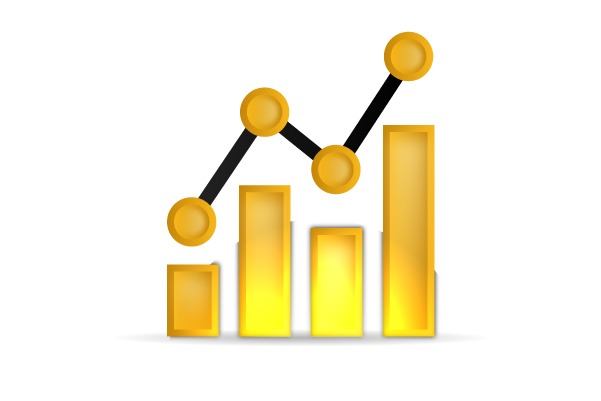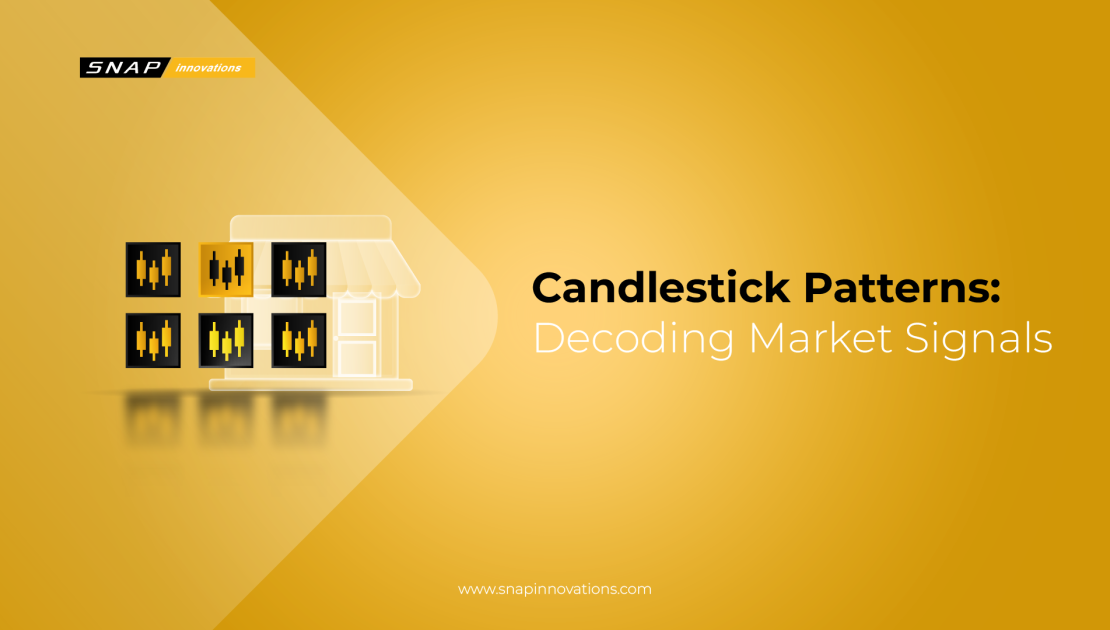The world of financial markets is filled with complexity and nuance. Investors and traders are constantly seeking ways to decode the signals that markets send. In this quest, candlestick patterns have emerged as a powerful tool for understanding market sentiment and making informed trading decisions.
These patterns, with their intriguing names like “Doji” and “Hammer,” offer valuable insights into the ebb and flow of asset prices. In this article, we will delve into the world of candlestick patterns, exploring their origins, significance, and practical applications. Whether you’re a seasoned trader or just starting, understanding these patterns can provide you with a valuable edge in the world of finance.
What is Candlestick Patterns?
 Candlestick patterns are a visual representation of price movements in financial markets. They originated in Japan in the 18th century, where they were used to analyze the rice futures market. The concept behind candlestick patterns is relatively simple yet incredibly insightful. Each candlestick on a price chart represents a specific time period, be it minutes, hours, days, or weeks, and is composed of four main components: the open, close, high, and low prices for that period. These components are visualized as the body, wick, and shadow of the candlestick.
Candlestick patterns are a visual representation of price movements in financial markets. They originated in Japan in the 18th century, where they were used to analyze the rice futures market. The concept behind candlestick patterns is relatively simple yet incredibly insightful. Each candlestick on a price chart represents a specific time period, be it minutes, hours, days, or weeks, and is composed of four main components: the open, close, high, and low prices for that period. These components are visualized as the body, wick, and shadow of the candlestick.
Understanding candlestick patterns involves recognizing various configurations that these candlesticks form. These configurations are characterized by the shape and arrangement of candlesticks on a price chart and are categorized into bullish (indicating potential price increases) and bearish (indicating potential price decreases) patterns. While individual candlestick patterns can provide valuable information, it’s often their combinations and sequences that offer the most profound insights into market dynamics.
Moreover, candlestick patterns are not just static formations; they are dynamic and responsive to market sentiment. Traders and analysts often use them to gauge the balance of power between buyers and sellers in a given market. For instance, a long green candlestick with a small upper shadow and no lower shadow (resembling a bullish marubozu) suggests strong buying pressure, indicating that buyers have dominated the market during that time frame.
The Significance of Candlestick Patterns
The significance of candlestick patterns lies in their ability to reveal market sentiment and potential price reversals. Let’s delve even deeper into the significance of candlestick patterns:
1. Market Sentiment Decoder
Candlestick patterns, as a market sentiment decoder, offer traders a nuanced understanding of the psychology behind price movements. Consider the “Doji” candlestick. Beyond indicating market indecision, the positioning of the upper and lower shadows (wicks) within the Doji can reveal the intensity of the battle between bulls and bears.
A “Long-legged Doji” with extended shadows suggests heightened uncertainty, signaling the potential for significant price swings in either direction. Discerning these subtleties empowers traders to make more precise and informed trading decisions based on the prevailing sentiment.
2. Price Reversal Indicators
Candlestick patterns are powerful tools for identifying potential price reversals. Patterns like the “Morning Star” and “Evening Star” hold particular significance as robust reversal signals, especially when they appear after an established trend.
However, traders often combine candlestick patterns with other technical analysis tools, such as trendlines, support and resistance levels, or oscillators, to reinforce their conviction in potential reversals. This synergistic approach strengthens decision-making by offering a more comprehensive view of the market dynamics.
Also Read: Present Value: Continue Adding to Your Financial Know-How
3. Risk Management Tools
Effective risk management is not solely about placing stop-loss orders; it also entails understanding the risks associated with each candlestick pattern. For example, a “Spinning Top” suggests market indecision and may not warrant an aggressive stop-loss placement.
Conversely, a “Bearish Engulfing” pattern, emerging after a prolonged uptrend, could signal the need for closer scrutiny and more stringent risk controls. Traders must tailor their risk management strategies to account for the reliability and contextual factors surrounding each pattern, striking a balance between risk and reward.
4. Confirmation of Support and Resistance
Candlestick patterns play a crucial role in confirming support and resistance levels while enabling traders to anticipate price reactions at these critical junctures. For instance, a “Piercing Pattern” following a downtrend may indicate potential buying interest near a support level, serving as a compelling entry point for traders anticipating a trend reversal.
By seamlessly integrating candlestick patterns into their support and resistance analysis, traders can formulate comprehensive trading strategies that capitalize on these significant price levels.
5. Psychological Insights
Candlestick patterns provide valuable insights into trader psychology, shedding light on shifts in market sentiment. Patterns like “Engulfing” or “Harami” reveal changes in market sentiment. Analyzing these shifts offers traders a competitive edge, especially when coupled with an understanding of behavioral biases like herd mentality or confirmation bias, which often influence market behavior.
This psychological dimension adds depth to the interpretation of candlestick patterns and enables traders to anticipate potential market moves with greater accuracy.
6. Versatility Across Timeframes
Candlestick patterns exhibit remarkable versatility across various timeframes, accommodating traders with diverse horizons and objectives. Short-term traders may focus on shorter intervals, actively seeking patterns like “Bullish Harami” for rapid scalping opportunities.
In contrast, long-term investors might apply patterns like the “Double Bottom” on daily or weekly charts to make well-informed investment decisions. The key lies in aligning the chosen timeframe with specific trading goals and risk tolerance, allowing traders to adapt to evolving market conditions effectively.
7. Visual Clarity
The visual simplicity of candlestick patterns simplifies the interpretation of price action. However, becoming proficient in using these patterns requires more than mere pattern recognition. It entails considering the broader market context. Factors such as trading volume, news events, and macroeconomic trends can significantly impact the effectiveness of candlestick patterns.
Traders must develop the ability to synthesize these factors with the patterns they identify, fostering a holistic approach to analysis that takes into account both the forest and the trees.
8. Customization and Adaptation
Experienced traders often customize and adapt candlestick patterns to align with their specific trading strategies. This customization may involve combining multiple patterns to strengthen signals, considering the time of day to account for liquidity variations, or applying patterns to different asset classes to diversify their trading portfolio.
Successful traders continuously refine their approaches and remain adaptable in response to ever-evolving market conditions, demonstrating the dynamic nature of candlestick pattern analysis.
By delving into these dimensions of candlestick patterns with greater granularity, traders can cultivate a profound understanding of their significance. This heightened awareness, coupled with diligent practice and continuous learning, equips traders with the tools needed to proficiently identify patterns, interpret their implications, and apply them effectively in real-time trading scenarios.
7 Types of Candlestick Patterns You Should Know
 Understanding candlestick patterns is a fundamental skill for anyone serious about trading in the financial markets. These patterns, which are visual representations of price movements within a specific time frame, can provide critical insights into market sentiment and potential future price actions. By interpreting these patterns, traders can make more informed decisions, enhance their market timing, and improve their overall trading strategies. In this article, we will explore seven essential candlestick patterns that every trader should know. Whether you are a novice or an experienced investor, mastering these patterns can help you navigate the complexities of the market with greater confidence and precision.
Understanding candlestick patterns is a fundamental skill for anyone serious about trading in the financial markets. These patterns, which are visual representations of price movements within a specific time frame, can provide critical insights into market sentiment and potential future price actions. By interpreting these patterns, traders can make more informed decisions, enhance their market timing, and improve their overall trading strategies. In this article, we will explore seven essential candlestick patterns that every trader should know. Whether you are a novice or an experienced investor, mastering these patterns can help you navigate the complexities of the market with greater confidence and precision.
1. Bullish Engulfing Pattern
The Bullish Engulfing pattern is a potent bullish signal that signifies a shift in market sentiment from bearish to bullish. The smaller bearish candle followed by a larger bullish candle engulfing it suggests that buyers have gained control.
Traders often wait for confirmation in the form of higher prices on the next candle before entering a long position. Additionally, the size of the engulfing candle relative to the prior candle can provide clues about the strength of the potential reversal.
2. Bearish Engulfing Pattern
Conversely, the Bearish Engulfing pattern serves as a strong bearish reversal signal. It occurs after an uptrend and consists of a small bullish candle followed by a larger bearish candle that engulfs the previous one.
This pattern suggests a transition from bullish to bearish sentiment, and traders look for confirmation of further price declines. The depth of the engulfing bearish candle relative to the prior bullish candle can provide insights into the potential strength of the reversal.
3. Doji
Doji candlesticks are characterized by their small bodies and nearly equal-length upper and lower wicks. These patterns reflect market indecision and can appear in various forms, such as the classic Doji, Dragonfly Doji, and Gravestone Doji.
Traders interpret Doji candles as potential reversal or continuation signals, depending on their position within the price action. A Doji at a key support or resistance level can be particularly significant.
4. Hammer and Hanging Man
The Hammer and Hanging Man patterns are both single-candle patterns with small bodies and long lower shadows. Hammers occur after a downtrend and suggest a bullish reversal, as buyers step in to push prices higher from their lows.
Hanging Man patterns emerge during uptrends and imply a bearish reversal, indicating potential weakness in the previous bullish momentum. Traders often look for confirmation in the subsequent price action to validate these signals.
5. Morning Star and Evening Star
The Morning Star is a bullish reversal pattern comprised of three candles: a bearish candle, followed by a small, indecisive candle (Doji or spinning top), and then a strong bullish candle. It signals a potential shift from a downtrend to an uptrend and can be a bullish entry point.
Conversely, the Evening Star is a bearish reversal pattern formed by a bullish candle, followed by an indecisive candle, and then a bearish candle. It warns of a possible trend change from uptrend to downtrend.
6. Shooting Star and Inverted Hammer
Both the Shooting Star and Inverted Hammer feature small bodies and long upper shadows. The Shooting Star appears during an uptrend and suggests a potential bearish reversal, as sellers push prices down from their highs.
The Inverted Hammer forms in downtrends and implies a potential bullish reversal, indicating that buyers have entered the market. As with other candlestick patterns, traders often look for confirmation from subsequent price action.
7. Dark Cloud Cover and Piercing Pattern
The Dark Cloud Cover is a bearish reversal pattern that emerges after an uptrend. It consists of a bullish candle, followed by a bearish candle that partially engulfs the prior bullish candle. Traders consider this pattern as a warning sign of potential bearish momentum.
On the contrary, the Piercing Pattern is a bullish reversal signal appearing after a downtrend. It consists of a bearish candle followed by a bullish candle that penetrates at least halfway into the previous bearish candle’s body. This pattern suggests a potential shift to bullish sentiment.
By thoroughly understanding these candlestick patterns and their variations, traders gain valuable tools for interpreting market sentiment and making well-informed trading decisions. However, it’s crucial to remember that no single candlestick pattern guarantees success in trading. Traders should always consider multiple factors, such as volume, trend, and support/resistance levels, before executing trades and employ risk management strategies to mitigate potential losses.
Common Mistakes in Using Candlestick Patterns
 Many traders, especially beginners, fall into common traps when utilizing candlestick patterns in their technical analysis. One frequent mistake is overreliance on individual candlestick patterns without considering broader market context. It’s crucial to remember that these patterns are not foolproof, and their effectiveness can vary based on market conditions. Another pitfall is ignoring confirmation signals, as traders may jump into trades solely based on a single candlestick pattern, neglecting the need for additional supporting factors like volume and trend direction.
Many traders, especially beginners, fall into common traps when utilizing candlestick patterns in their technical analysis. One frequent mistake is overreliance on individual candlestick patterns without considering broader market context. It’s crucial to remember that these patterns are not foolproof, and their effectiveness can vary based on market conditions. Another pitfall is ignoring confirmation signals, as traders may jump into trades solely based on a single candlestick pattern, neglecting the need for additional supporting factors like volume and trend direction.
Furthermore, chasing trades without waiting for a clear setup can lead to losses, as impulsive actions often result in unfavorable entries. Additionally, failure to adapt to changing market dynamics is a significant error, as what worked in one situation may not work in another. Lastly, neglecting risk management practices and overtrading based on candlestick signals can result in substantial losses. To avoid these common mistakes, traders should use candlestick patterns as part of a comprehensive trading strategy, combining them with other technical indicators and risk management techniques while maintaining discipline and adaptability in their approach.
Moreover, overcomplicating the analysis by trying to spot too many patterns in a single chart can lead to confusion and poor decision-making. Keeping the analysis simple and focused is often more effective. Lastly, confirmation bias is a common pitfall, where traders only see what they want to see in the candlestick patterns, leading to biased interpretations. To overcome these challenges, traders should continuously educate themselves, practice on historical data, and remain open to learning from both successes and mistakes.
The Future of Candlestick Patterns
 The future of candlestick patterns holds promise as technology continues to shape the landscape of financial markets. With advancements in data analytics, machine learning, and artificial intelligence, traders and analysts can expect even more sophisticated tools for pattern recognition and predictive modeling. This means that candlestick patterns, which have been a staple of technical analysis for centuries, will evolve to become more accurate and adaptive.
The future of candlestick patterns holds promise as technology continues to shape the landscape of financial markets. With advancements in data analytics, machine learning, and artificial intelligence, traders and analysts can expect even more sophisticated tools for pattern recognition and predictive modeling. This means that candlestick patterns, which have been a staple of technical analysis for centuries, will evolve to become more accurate and adaptive.
Also Read: Pattern Day Trader: Rules, Risks, and Strategies
Additionally, the integration of real-time data and algorithmic trading will enable traders to respond to candlestick signals with greater speed and efficiency. Furthermore, the global nature of financial markets and the rise of cryptocurrencies will expand the range of assets and markets where candlestick patterns can be applied. While the core principles of candlestick analysis will remain intact, the future will likely see a convergence of traditional candlestick patterns with modern data science techniques, enhancing their effectiveness in understanding market behavior and making informed trading decisions.
Furthermore, the democratization of trading and investment through online platforms and mobile apps will likely lead to a broader adoption of candlestick patterns among retail traders. Education and training in technical analysis, including candlestick patterns, will become more accessible, empowering individuals to make informed decisions in the financial markets.
Conclusion
Candlestick patterns offer a window into the intricate language of financial markets. While they are not crystal balls for predicting prices, they provide valuable insights into market sentiment and potential price movements.
Traders who take the time to learn and apply candlestick patterns alongside other analysis tools can enhance their decision-making processes and gain a deeper understanding of the dynamic world of finance. Whether you’re a novice trader or an experienced investor, mastering the art of reading candlestick patterns can be a valuable asset on your journey through the markets.


